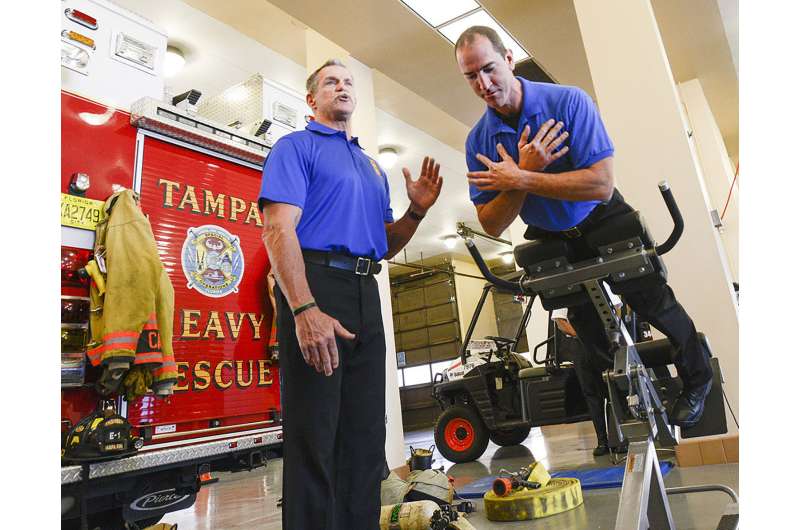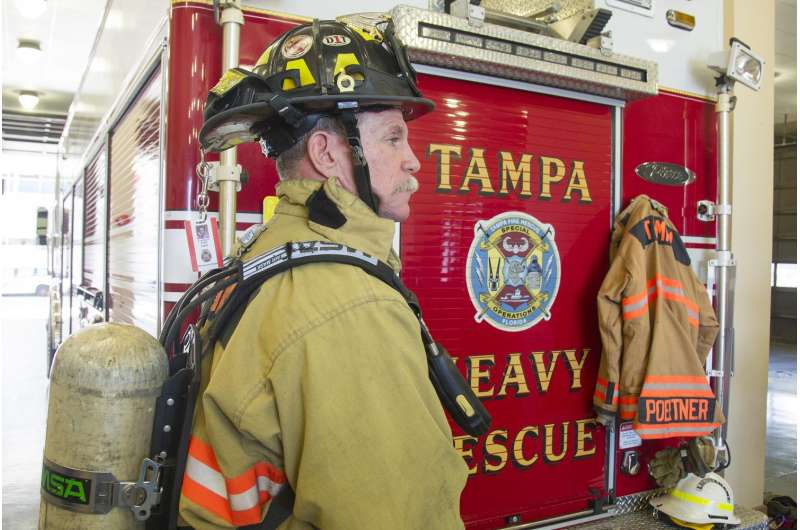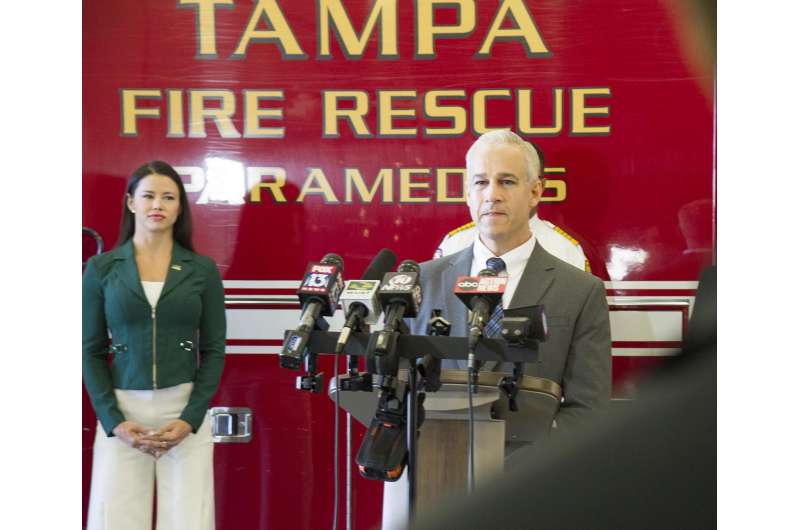FEMA study to test exercise regimen in preventing back injury in firefighters

The University of South Florida and Tampa Fire Rescue have launched a randomized controlled trial to assess the effectiveness of a worksite exercise regimen targeted to reduce the risk of low back injury and disability in firefighters—a physically demanding occupation particularly prone to back problems that can lead to chronic pain and early retirement.
If this pivotal trial proves successful, the exercise training program could be implemented across the country to improve the health, safety and preparedness of the nation's firefighters.
The full-scale prevention study is supported by a $1.3-million Federal Emergency Management Agency (FEMA) Assistance to Firefighters Grant, including a 5-percent extramural funding match from the Florida Chiropractic Foundation for Education and Research. It marks the third and most comprehensive project of ongoing FEMA-funded research by John Mayer, DC, PhD, Lincoln Endowed Chair of Biomechanical and Chiropractic Research at the USF Health Morsani College of Medicine's School of Physical Therapy & Rehabilitation Sciences.
Starting this month with participants recruited from Tampa Fire Rescue, the study will roll out to St. Petersburg Fire Rescue and Hillsborough County Fire Rescue over the next four months. Approximately 350 firefighters from these three fire departments - the Tampa Bay region's largest—will join the 13-month trial. Results of the study are expected in Fall 2017.

"Assuming positive results," Dr. Mayer said, "this study will deliver the first evidence-based exercise intervention to prevent low back injury in firefighters, so that they can more effectively and safely carry out their duties to protect the community."
"Career preservation is our goal. The current study provides an excellent platform to achieve this and serves as an impetus to expand our firefighter wellness initiatives," said Charity L. Lane, MA, MS, project manager, USF Health.
Back injuries are the leading cause of permanent disability and early retirement among firefighters, who often carry more than 50 pounds of protective gear in their jobs, haul heavy fire hoses and lift and maneuver stretchers around tight corners or contort themselves to extract accident victims from cars.

"We are pleased to partner with USF on this study, which aims to improve the quality of life for our firefighters and enhance their readiness to serve our citizens as first responders," said Tampa Fire Rescue Chief Thomas Forward.
The standardized exercise protocol being tested was specifically designed to strengthen back and core muscles, including training on a specialized machine that isolates lower back muscles. The USF researchers will compare the clinical outcomes in three groups of randomly assigned firefighters—one receiving a directly supervised exercise regimen at the fire station two times a week for one year, another guided through the same worksite exercise regimen, but as a remote, web-based interaction (a telehealth system that encourages exercise adherence), and a control group given brief instruction on general exercise principles. All study participants, whether undergoing the exercise intervention or not, will continue their usual physical fitness routines.
To assess the exercise program's effectiveness, the researchers will measure such factors as low back injury incidences and illness data, validated physical fitness tests, lost work days and costs.
The new study builds upon Dr. Mayer's earlier FEMA-funded studies, demonstrating:
- A link between weak back muscle endurance and increased prevalence of low back pain in firefighters.
- Supervised worksite exercise training targeting back and core muscle endurance in firefighters was safe and appeared to work, indicating the intervention could protect against future low back pain. The preliminary study was reported in the American Journal of Health Promotion.
If this new study confirms the investigational exercise protocol's benefit in Tampa Bay firefighters, the findings could also have implications for countering substantial adverse consequences of chronic back pain and injury in the general population, including health care and work-related costs, Dr. Mayer noted.
More information: John M. Mayer et al. Impact of a Supervised Worksite Exercise Program on Back and Core Muscular Endurance in Firefighters, American Journal of Health Promotion (2015). DOI: 10.4278/ajhp.130228-QUAN-89















